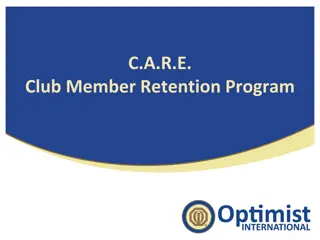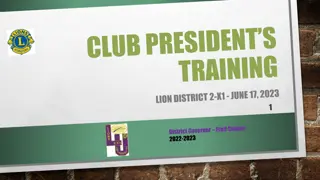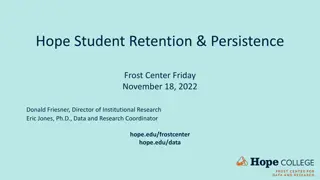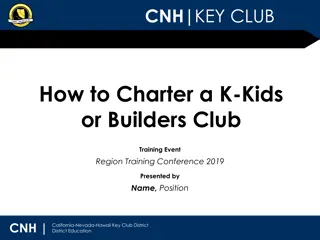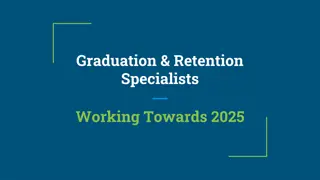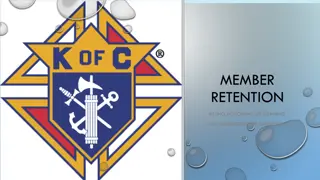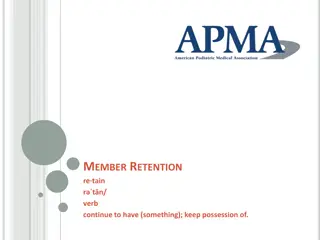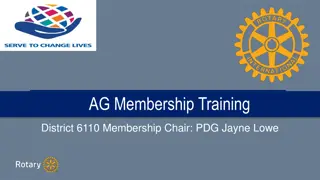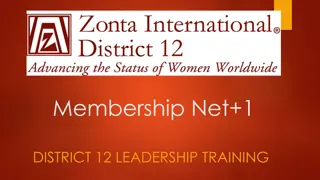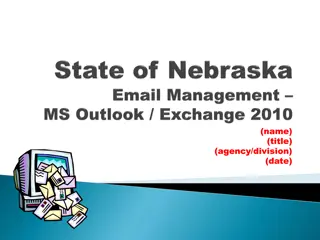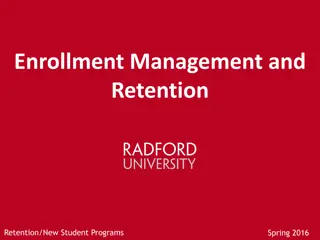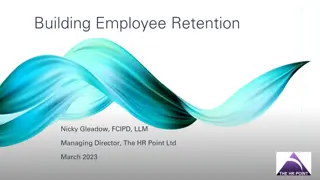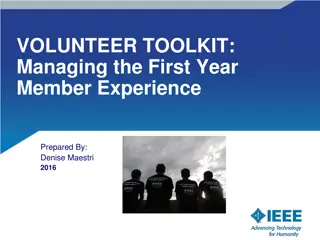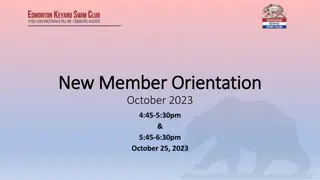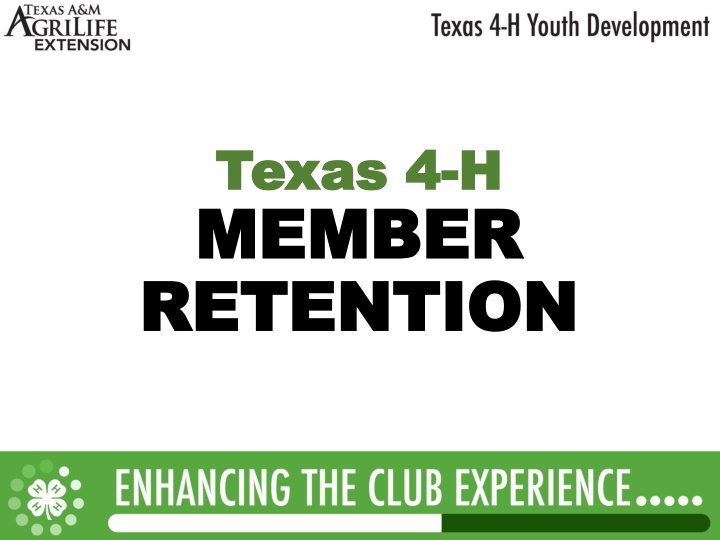
Importance of 4-H Membership and Life Skills Development
Learn why individuals join 4-H clubs, the benefits of membership including leadership skills, self-confidence, and community involvement, and how 4-H enhances the lives of young members through practical skills, social competence, and more. Discover the Targeting Life Skills Model employed by Iowa State University Extension for youth development in 4-H programs. See the positive impact of 4-H membership on civic engagement, community contributions, healthy choices, and educational pursuits, based on research findings. Find out how 4-H empowers youth to develop essential skills for success in adulthood and creates a lasting legacy of learning and growth.
Download Presentation

Please find below an Image/Link to download the presentation.
The content on the website is provided AS IS for your information and personal use only. It may not be sold, licensed, or shared on other websites without obtaining consent from the author. If you encounter any issues during the download, it is possible that the publisher has removed the file from their server.
You are allowed to download the files provided on this website for personal or commercial use, subject to the condition that they are used lawfully. All files are the property of their respective owners.
The content on the website is provided AS IS for your information and personal use only. It may not be sold, licensed, or shared on other websites without obtaining consent from the author.
E N D
Presentation Transcript
Texas 4 Texas 4- -H H MEMBER MEMBER RETENTION RETENTION
Why do members join? As a young member, parents will sign-up their child to gain experience outside of home and school Parents want their children to learn something new Meet friends Friends are in 4-H Legacy (parents were in 4-H) Fun!
Membership is important! Development of leadership skills & life skills Self-confidence Social competence Practical skills Take on community leadership roles Feel more accepted by adults Communication skills Problem solving Responsibility College preparation and more! Less likely to be involved in at-risk behaviors Skills to be successful as an adult
Targeting Life Skills Model Targeting Life Skills Model Iowa State University Extension, 4-H Youth Development
Targeting Life Skills Model Targeting Life Skills Model HEAD HEART HANDS HEALTH Managing Thinking Relating Caring Giving Working Living Being Community Service/ Volunteering Healthy Lifestyle Choices Service Learning Accepting Differences Nurturing Relationships Marketable Skills Resiliency Self-esteem Keeping Records Critical Thinking Conflict Resolution Stress Self- Sharing Leadership Teamwork Management responsibility Wise Use of Resources Problem Solving Responsible Citizenship Self- Disease Prevention Social Skills Empathy Character motivation Planning/ Organizing Decision Making Concern for Others Contribution to Group Effort Personal Safety Managing Feelings Cooperation Learning to Learn Goal Setting Communication Self-discipline
Membership is important! Membership is important! Lerner & Lerner (2013) found that 4-H members are: Nearly 4x more likely to make contributions to their communities About 2x more likely to be civically active Nearly 2x more likely to participate in science, engineering, and computer technology programs during out-of-school time Nearly 2x more likely to make healthier choices Females in grade 10 are nearly 2x more likely and females in grade 12 are nearly 3x more likely to take part in science programs during out-of-school time compared to other girls
Membership is important! Membership is important! And hopefully it is.. FUN!!!!
But. But . How can youth have these awesome benefits and gain such incredible life skills if they re not a member of our 4-H program??
Activity: Why do members Activity: Why do members leave? leave? Small groups What do you think?
WHEN do they leave? WHEN do they leave? It happens in ANY youth organization! Largest membership is 9-11 years of age Teen dropout is normal After the first year (largest dropout) After the second year High school
WHY do they leave? WHY do they leave? It is usually a combination of factors, not just one factor And there s a long list of potential reasons! Do any of the following reasons match what we have already discussed?
WHY do they leave? WHY do they leave? Too confusing, lack of understanding Family moved away Never felt welcomed Conflicting time commitments Project groups didn t meet often enough Youth feel adults were unsupportive Negative experiences from competitive events Too many other activities
WHY do they leave? WHY do they leave? As they grow older, youth want to exercise independence typically from their parents (but not necessarily a negative thing) Want to do something different Even if they enjoyed it when they were younger Want leadership responsibilities Activities are not targeted at older age group Looking for independent activities (rather than group setting) Opportunities for part-time jobs/earn income
WHY do they leave? WHY do they leave? Parental involvement Lack of success in competitive events Financial concerns Perceived available opportunities Social status (Is it cool to a member?) Support from Extension staff and/or volunteers Leader to member ratio (too many members for the number of leaders) Lack of quality meetings
Brainstorm! Brainstorm! Now knowing WHEN and WHY members leave, let s brainstorm what we can do to prevent that. Pick 3-5 reasons Concrete examples of things we can do! What can your club do? What can we do at the county level?
Action! Action! We know 4-H membership is beneficial! But youth cannot gain those skills if they re not involved Do what you can to help keep them involved Rely on others to help, too!


